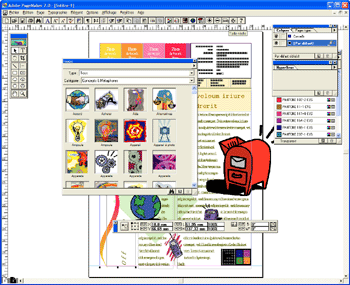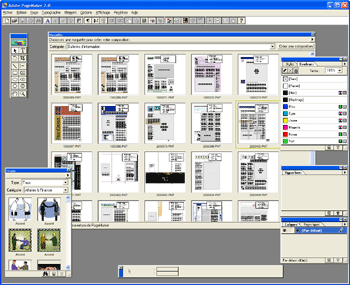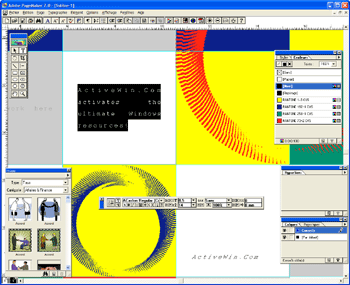| |
|

|
|

|
|
DirectX
|
|
ActiveMac
|
|
Downloads
|
|
Forums
|
|
Interviews
|
|
News
|
|
MS Games & Hardware
|
|
Reviews
|
|
Support Center
|
|
Windows 2000
|
|
Windows Me
|
|
Windows Server 2003
|
|
Windows Vista
|
|
Windows XP
|
|

|
|

|
|

|
|
News Centers
|
|
Windows/Microsoft
|
|
DVD
|
|
Apple/Mac
|
|
Xbox
|
|
News Search
|
|

|
|

|
|

|
|
ActiveXBox
|
|
Xbox News
|
|
Box Shots
|
|
Inside The Xbox
|
|
Released Titles
|
|
Announced Titles
|
|
Screenshots/Videos
|
|
History Of The Xbox
|
|
Links
|
|
Forum
|
|
FAQ
|
|

|
|

|
|

|
|
Windows
XP
|
|
Introduction
|
|
System Requirements
|
|
Home Features
|
|
Pro Features
|
|
Upgrade Checklists
|
|
History
|
|
FAQ
|
|
Links
|
|
TopTechTips
|
|

|
|

|
|

|
|
FAQ's
|
|
Windows Vista
|
|
Windows 98/98 SE
|
|
Windows 2000
|
|
Windows Me
|
|
Windows Server 2002
|
|
Windows "Whistler" XP
|
|
Windows CE
|
|
Internet Explorer 6
|
|
Internet Explorer 5
|
|
Xbox
|
|
Xbox 360
|
|
DirectX
|
|
DVD's
|
|

|
|

|
|

|
|
TopTechTips
|
|
Registry Tips
|
|
Windows 95/98
|
|
Windows 2000
|
|
Internet Explorer 5
|
|
Program Tips
|
|
Easter Eggs
|
|
Hardware
|
|
DVD
|
|

|
|

|
|

|
|
ActiveDVD
|
|
DVD News
|
|
DVD Forum
|
|
Glossary
|
|
Tips
|
|
Articles
|
|
Reviews
|
|
News Archive
|
|
Links
|
|
Drivers
|
|

|
|

|
|

|
|
Latest Reviews
|
|
Xbox/Games
|
|
Fallout 3
|
|

|
|
Applications
|
|
Windows Server 2008 R2
|
|
Windows 7
|
|

|
|
Hardware
|
|
iPod Touch 32GB
|
|

|
|

|
|

|
|
Latest Interviews
|
|
Steve Ballmer
|
|
Jim Allchin
|
|

|
|

|
|

|
|
Site News/Info
|
|
About This Site
|
|
Affiliates
|
|
Contact Us
|
|
Default Home Page
|
|
Link To Us
|
|
Links
|
|
News Archive
|
|
Site Search
|
|
Awards
|
|

|
|

|
|

|
|
Credits
©1997-2012, Active Network, Inc. All Rights Reserved.
Please click
here
for full terms of use and restrictions or read our Light Tower
Privacy
Statement.
|

|
|
 |
|

Interface
If you have never used Adobe PageMaker before, you’ll certainly be surprised
when the interface of the software is shown. Indeed with the addition of the
toolbar the look of the interface isquite ugly but remains efficient,
nonetheless. The toolbar features shortcuts to the most popular features
like new, open, save, print, search, spell check, etc. However, we regret
that the icons used by the toolbar’s buttons aren’t Microsoft Office
compliant. The most obvious advantage of Adobe’s PageMaker
7
interface is that it retains the resemblance with other Adobe software like
PhotoShop and Illustrator. Not only does it offer the same keyboard
shortcuts as in every Adobe application but also you’ll find the same tabbed
palettes to work more efficiently. Thus you can seamlessly switch between
Adobe applications without worrying about where to find the most common
commands. Like in all Adobe applications many palettes are displayed on
screen, obivouslyincluding the well known tools palette that contains all
the tools available in PageMaker. There’s also a picture palette that lists
all of the available royalty-free illustrations and photographs included
with PageMaker
7which
lets you browse the clipart by category. Of course you can add pictures of
your own to the palette (or remove existing ones) and even search for
pictures. Another palette displays the X, Y, coordinates of your mouse
cursor. There is also a color tab where you can choose the color to be used
with shapes or texts, and a styles tab lets you select predefined styles for
your text (like body, address, heading). With PageMaker
7.0,
each publication contains its own collection of colors which you can define
on your ownand select them from a color matching system or import them with
an EPS graphic.

Adobe PageMaker 7.0 Picture
Palette (click to enlarge)
First Start
Each time
you start Adobe PageMaker
7,
a dialog box appears prompting you to select a template with which you work.
This feature is like Microsoft Publisher’s since the templates palette
offers more than three hundred professionally designed templates that will
help you create your publication in a few clicks, saving precious time.
Templates are sorted by categories,so you simply have to switch categories
from the templates list so thumbnails of each template available for a
specified category are displayed. Most of the templates included are really
good looking, which is great since you’ll want to use all of them. Once
you’ve chosen your template, PageMaker will build it and you’ll be able to
customize it. Like in Microsoft Publisher
2002
or InDesign, PageMaker shows a page representing your composition. With a
real WYSIWYG interface you can create, position, move, resize text frames,
shapes, etc. If you like you can zoom-in or zoom-out of the page to better
see your objects. The software offers two rulers for a real accurate
positioning of the items. Like with PhotoShop you can click on one of the
rulers and drag it over the page to get a blue line in the page that will
help you position items.

Adobe PageMaker 7.0 First Start (click to
enlarge)
Features
One of the coolest professional features offered by PageMaker
7
is the management of layers. Using layers you can set up a single file for
multiple versions of a publication, or add annotations, etc. You can place
text on separate layers to control which objects are visible or not but you
can also turn off the graphics layer. When you create a multipage
publication, it might be helpful to set up a master page that sets every
page of the composition the same margins, headers, footers, column guides
and backgrounds. This can be done with a few mouse clicks thanks to the
unrivalled ease of use of PageMaker
7.
The layout adjustment feature of PageMaker
7
will automatically reposition, resize, and reflow text blocks, frames and
graphics when you revise the layout framework of a page or a whole
composition.
With
PageMaker
7.0,
Adobe included new advanced word processing capabilities that will greatly
help users to type their texts within the software rather than using a
program such as Microsoft Word. With PageMaker
7.0
you can type and format your text directly in the layout view, just like you
would in other publishing software, or you can use the story editor. The
story editor is a word processor built into PageMaker
7.0
that you activate by clicking on the ‘Story Editor’ command of the edit
menu. In this mode you can set tabs, indents, insert tables or any other
word processing task, like spell-checking your publications. Once you’ve
typed a text in PageMaker you can easily switch to the layout view by a
single click in the edit menu to see how the text integrates itself into
your composition. A PageMaker
7.0
story is similar to an article in a newspaper and thus several stories may
appear on the same page and continue elsewhere on a different page of the
publication. The story editor of PageMaker
7.0
is perfect to work on long documents, assemble multiple publications into a
book or , since you can create a table of contents and an index, renumber
pages and print the book very easily. When you export a publication to Adobe
PDF, the software can automatically generate bookmarks and hypertext links
for a table of contents and index entries in Adobe PDF files.

Adobe PageMaker 7.0 Story Editor (click to
enlarge)
Nonetheless if you still prefer the power of Word, you’ll be glad to know
PageMaker
7.0
can import Word and RTF files thanks to its new file filter that supports
Word
2000
file format. To easily and quickly change the appearance of fonts used in a
document, PageMaker
7.0
offers a complete text toolbar. This toolbar, that looks ugly and that is
everything but handy, regroups several commands to put your text in shape.
In the center of the toolbar there’s a drop down list of fonts available on
the system but unlike with Microsoft Office XP you can’t preview within the
list what each font looks like. The toolbar also displays the font size list
where you can select and set the size of the text, and there are buttons
like ‘B’, ‘I’, ‘U’, ‘Q’ to change the form of your text (Bold, Italic,
Underline, Strikethrough, etc.). The text toolbar also offers advanced
features that let you change the spacing between lines and letters as well
as the width of each font’s characters. Also the toolbar provides shortcuts
to convert the selected word into caps, small caps, or small letters or put
it in exponent or index. A click on the paragraph button of the toolbar will
give you access to justify, center, align on the left/right features and
unveils precise positioning features that can set the indent of a text, the
space between paragraphs, etc. Font settings can also be accessed in a much
clearer dialog box by clicking the ‘A’ button of the main toolbar. Note that
to type a text, you have to draw a block of text. Once you’ve typed your
text, the block can be resized and moved over the page, at your
convenience.

Adobe PageMaker 7.0 Text ToolBar (click to
enlarge)
With
PageMaker
7.0
you can create professional documents via the layout features and
professional typographic features offered by the software. Just like graphic
designers you can use tracking to change the visual denseness of type on the
page, and kerning to adjust the spacing between pairs of letters. The
typography can be set to professional standards with point-size-dependent
tracking, kerning in
0.001
–em increments, and expanded and condensed type. PageMaker
7.0
offers precise control over word and letter spacing, hyphenation and
justification and text alignment unlike Microsoft Publisher
2002.
It’s my
bet that in every office, where PageMaker
7.0
will most likely be used, the designer will probably use PhotoShop as well.
To simplify things, Adobe has further enhanced the integration of PhotoShop
files into PageMaker
7.0.
How? Well PageMaker
7.0
now imports PhotoShop
5.0,
5.5,
6.0
files natively so you only have to store and manage one image file for use
in multiple documents and applications. There’s no need anymore to create
flattened PhotoShop files to import them in the software. The best thing is
that when you modify the PhotoShop file you’ve imported into a document,
PageMaker can automatically update it for a better efficiency.
|
|
 |
|








